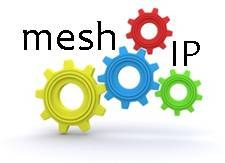 As the dominant IT paradigm continues to shift, companies need to manage critical components of the migration.
As the dominant IT paradigm continues to shift, companies need to manage critical components of the migration.
Companies still face plenty of questions regarding cloud computing. Increasingly, however, the dominant question is not whether to do it, but how intensely.
In fact, given the pace at which companies are offloading at least part of their IT infrastructure to public clouds (generally defined as third-party services that host computing workloads in multi-tenant data centers), those that don’t move aggressively may risk being left behind. Research firm Gartner estimates that global spending on cloud services will hit $68 billion this year, a gain of 16% over 2009, which is more than triple the expected growth rate for total IT spending.
Not that it’s an equal opportunity for all. For many small companies, it’s almost a no-brainer to outsource nearly everything to “the cloud,” which both removes the traditional barrier of upfront capital investment in IT and provides the scalability needed to accommodate fast growth or spikes in demand. For large companies with heavy sunk costs in on-premises equipment — and the in-house expertise needed to make the most of it — the savings proposition requires a more careful calculation.
But even larger enterprises are signing on for a growing list of popular cloud-based services, from
e-mail and sales-force automation to collaboration environments and human-resources management. As companies of all sizes gain more experience with cloud computing, an emerging body of best practices is beginning to take shape. Here we address some of the most common current concerns. (For more on moving to the cloud, see “Your Cloud or Mine?” July/August.)
Stay Alert
A big-bang cutover from the old paradigm to the new is highly unlikely. Instead, opportunities to minimize your physical IT infrastructure will probably present themselves piecemeal. A smart approach for CFOs is to ask whether and to what degree a cloud option has been considered as part of each funding request submitted by a business unit or the IT department.
For example, as servers become obsolete or fully depreciated, consider whether it makes more sense to move the applications that run on them to the cloud, rather than investing in another hardware-refresh that may be in the service of aging software.
Also, avoid investing in server capacity based on what is needed to meet peak demand (such as to support a new marketing campaign) but that will, for the most part, saddle you with more than you need. “In many cases you’re not sure exactly what the peak is going to be, so you should leverage the scalability of the cloud,” says Bernard Golden, CEO of HyperStratus, a cloud consultancy.
Test-and-development environments are also ideal for the flexibility inherent in cloud computing. Historically, many companies have had huge resources tied up in preproduction systems that sit idle most of the time until some testing is required that entails installing new software. It costs far less to share infrastructure in the cloud with a large number of other companies.
More broadly, that same buy-only-what-you-need model can enable CFOs to greenlight more new projects. At a time when capex spending has been slashed, the option to incur modest IT costs in the form of operating expenses may be enough to nudge the needle to the “approved” side of the gauge.
Spread the Wealth
For many years, companies have looked to consolidate their IT expenditures with a few key business partners as a way to cut better deals and have the proverbial “one throat to choke” in case something goes wrong. While it’s a certainty that vendors will make the same one-stop-shop sales pitch as they offer an expanding array of cloud services, companies should think carefully about relying too heavily on just one vendor, particularly when it comes to core data-center services.
Outsourcing all or most computing processes to a single supplier can cause assorted problems, says chief Gartner fellow Daryl Plummer. For one thing, if there is an outage, all of your workloads will be down at once. For another, providers have different levels of competency in different services, like storage or database management; picking just one means you often won’t have the “best-of-breed” solution for a particular need. And, while having a single provider may promise a better deal in the form of a volume discount, it can just as easily rob you of negotiating leverage in this burgeoning field.
While interoperability issues have led some companies to limit the number of cloud providers they use, the rise of a class of intermediary firms, which Gartner calls “cloud-services brokerages,” is mitigating that concern. Like traditional systems integrators, the firms provide integration and customization services to make disparate cloud applications work together efficiently.
Tapping these firms may, in fact, emerge as a cloud best practice. In any event, expect to hear much more about them. Plummer, noting that “the accessories market always makes more money than the original-equipment market,” says the brokerages are sitting on “the largest growth opportunity in cloud computing, by far.”
Do a Test Run
When developing applications in-house for future deployment to the cloud, don’t miss the opportunity to quickly create working prototypes using cloud-based platforms.
A prototype doesn’t have to be production-ready to provide valuable insight into how the full-blown application will work. You can even create multiple versions to gauge how each performs and how quickly it can be executed and implemented.
It’s the cloud era’s version of a PowerPoint presentation: a step-by-step mock-up that can demonstrate what an application being developed in-house will ultimately look like. “With a prototype, you’ll have something more useful for making decisions,” says Mark Koenig, director of cloud strategy for Appirio, one of the cloud-services brokerages.
Get Ready for Change
A broad move to the cloud may present some change-management challenges, particularly in your IT department, as the mix of roles and responsibilities may change dramatically. A conventional IT department is populated with many people who keep servers and networks running, manage applications, and support users. As more of that works shifts to the cloud, IT needs to focus on contracting with vendors and managing service-level agreements.
“You need to understand that you may have to address the skill sets in the organization,” says Steve Hill, leader of innovation for KPMG. “Services management is very different from services delivery.”
But capabilities offered by cloud computing may create upheaval throughout the organization. For example, some retailers and manufacturers are now employing what’s known as a “community cloud” to improve supply-chain efficiency. That involves requiring suppliers to access a closed cloud platform across which data flows seamlessly from the retailer’s point-of-sale system to the supplier’s requisition, inventory management, and shipping systems and back to the retailer’s receiving system. A similar concept could take hold in many other parts of the business.
Managing such a process is very different from what many business leaders are accustomed to. Some may see it as a purely IT function, which is a mistake. “The cloud concept seems technical, so it’s often left to the CIO,” says Hill. “But it’s really about business. CFOs need to understand the implications of the cloud, even if it seems scary at first.”
Take Care with Contracts
As with all outsourcing arrangements, contract terms will prove critical. When dealing with cloud providers, it is crucial to specify that your company has the right to retain ownership, use, and control of its data. Demand to be notified in the event of changes in the service that would affect your business processes. Insist on detailed descriptions of how the vendor will assure the integrity, confidentiality, and availability of data.
Also, be aware of some potentially costly “gotchas” when contracting for cloud services:
¥Don’t tie usage levels to your baseline demand. If the contract doesn’t provide for variable-demand periods, there are likely to be costly up-charges when they happen, notes Jeff Muscarella, executive vice president of the IT division at NPI, a spend-management consultancy.
¥Be sure to understand what charges will apply to serve any unique requirements you have. Most cloud offerings are fairly generic. To handle specialized needs, such as compliance with payment-card industry regulations for retailers, there may be additional charges. Understand such charges before signing on.
¥Don’t assume you’ll be able to move your applications to the cloud for free, Muscarella says. Many software licenses prohibit a transfer to a multi-tenant environment, but the provider may let you do it for a price. If you think you’ll want the flexibility, ask for such permission to be written into licenses at the time you’re negotiating them.
Finally, consider adding a clause that stipulates that if your vendor is acquired or sells its assets you can terminate the contract without penalty.
Know Where Your Data Is
Cloud services usually involve moving data around among servers, which may reside in different locations. That makes it important to understand the legal requirements for jurisdictions in which a cloud vendor operates and to know exactly where your data may be sent. For example, the European Privacy Act limits the transfer of private personal information outside the European Union. If your data is transmitted between servers in London and India, you could risk a regulatory violation.
There are also jurisdictional issues, particularly with regard to taxation, within the United States. Laws differ from state to state on whether certain types of software-as-a-service accessed over the Web are subject to sales tax, and in some cases it only matters where the servers hosting the application, and not its end users, are located.
In short, bear in mind what the Wright Brothers had to learn the hard way: escaping the bonds of earth for the realm of the cloud is much more difficult than it appears.
- The Customer Edge Drives the Need for NaaS - June 25, 2023
- Blockchain Evolves And Secures - January 13, 2019
- Bessemer Ventures’ 2018 Cloud Computing Trends - February 25, 2018




